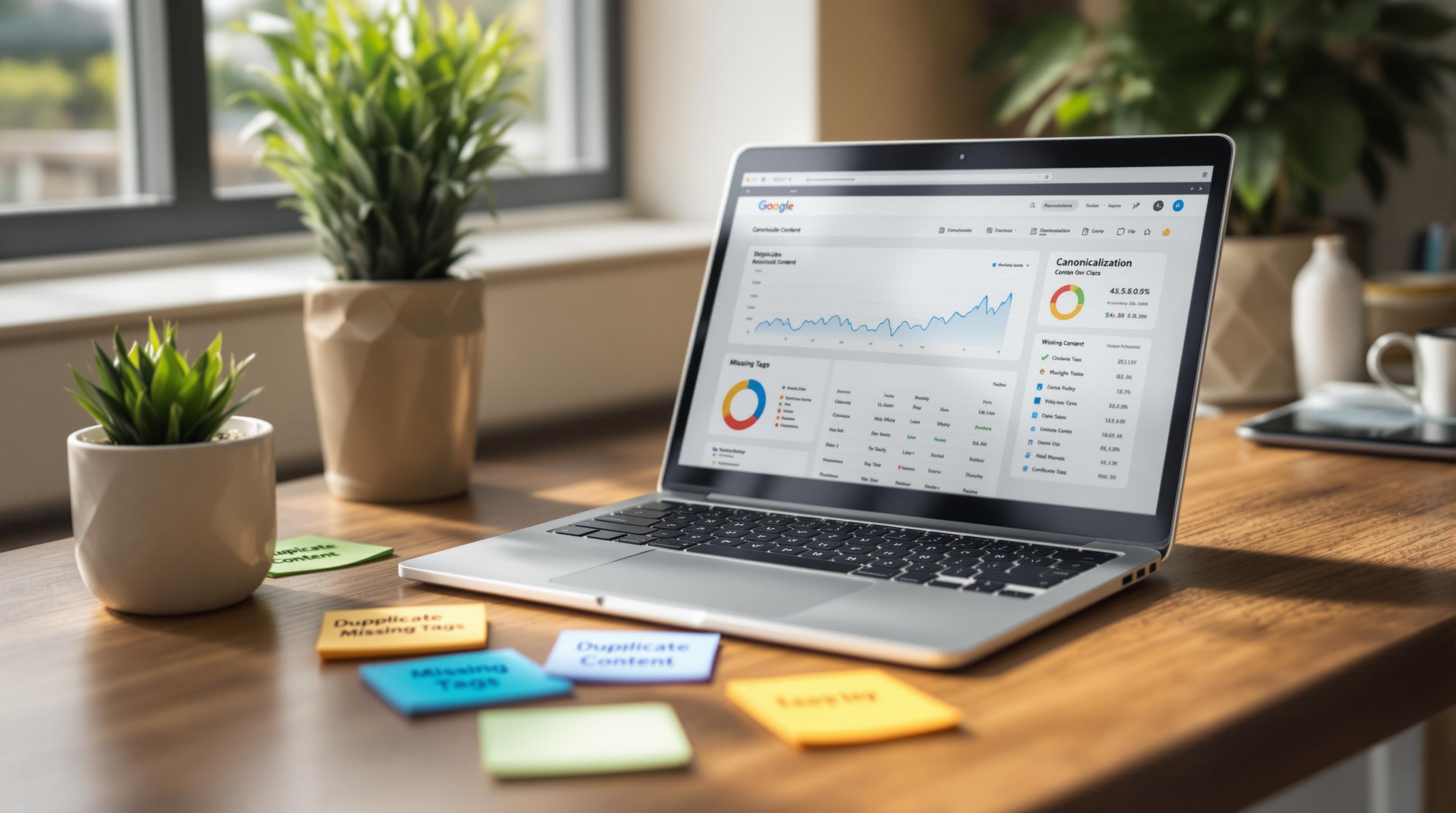Here’s the deal:
- 75% of online users prefer shopping in their native language, and 40% won’t buy if content isn’t in their language.
- English is just 52% of the web, so reaching non-English speakers is a huge opportunity.
- Multilingual backlinks boost visibility, drive traffic, and help you rank higher in regional search engines like Baidu (China) or Naver (South Korea).
What You’ll Learn:
- Pick the right markets: Analyze traffic, market size, and competition.
- Localize content: Translate and adapt content for local languages, design, and payment methods.
- Build quality links: Use local outreach, guest posts, and regional directories.
- Optimize technical SEO: Implement hreflang tags, improve site speed, and structure your site for global audiences.
- Track performance: Monitor traffic, rankings, and conversions for each language.
Why it matters: Search engines favor locally relevant content. If you’re not optimizing for global audiences, you’re leaving money on the table.
Ready to go global? Let’s dive in.
Building Your Multilingual Link Strategy
Selecting Markets and Languages
Choosing the right markets for expansion starts with a deep dive into your data. Did you know that 60% of all Google search queries are in languages other than English? This highlights a massive opportunity for businesses ready to go global.
Start by analyzing your website's traffic. If you’re seeing significant visits from countries like Germany or France, that’s a strong indicator those markets could be worth pursuing.
Here are a few critical factors to consider when selecting target markets:
- Market Size and Potential: Look at population numbers, economic indicators like GDP, and how digitally connected the region is.
- Competition Level: Check how crowded the market is and how strong your competitors are.
- Search Engine Preferences: Not every country relies on Google - platforms like Baidu or Naver dominate in certain regions.
- Resource Requirements: Factor in costs for translation, local marketing, and other operational needs.
Content Localization Best Practices
Once you’ve pinpointed your target markets, the next step is tailoring your content to fit. Research shows that 66% of corporate buyers are willing to pay more for products that feel customized to their market. Localization goes beyond language - it’s about aligning with local expectations.
Here’s how to adapt your content effectively:
| Aspect | Strategy |
|---|---|
| Language | Hire professional translators who understand local idioms and nuances. |
| Design | Adjust visuals - like colors, images, and layouts - to reflect local tastes. |
| Technical | Use ccTLDs and hreflang tags to ensure your content reaches the right audience. |
| Payment | Offer pricing in local currencies and support popular payment methods. |
| Support | Provide customer service during local business hours to build trust. |
Setting Clear Campaign Metrics
After localizing your content, you’ll need a way to measure success. Without clear metrics, it’s hard to know what’s working and what needs adjustment.
Focus on these areas to track performance:
| Metric Category | Key Performance Indicators |
|---|---|
| Traffic | Organic visits, bounce rates, and pages per session. |
| Links | Growth in domain authority and the number of referring domains. |
| Engagement | Time on site, social shares, and conversion rates. |
| Rankings | Keyword positions in search results. |
Be sure to monitor each language market separately. This helps you spot unique trends and challenges. For instance, a spike in organic traffic might show immediate interest, while long-term improvements in rankings and domain authority signal sustained growth.
To make tracking easier, use analytics tools that support multilingual data. Set up separate views for each language so you can dig into performance specifics and fine-tune your strategy.
6 Steps to Mastering Multilingual SEO | Expand Your Global Reach
Implementing Link Building Tactics
Once your localized content and clear campaign metrics are ready, it’s time to dive into various link-building strategies. Research shows that 65% of people prefer content in their native language, and 40% are unwilling to make purchases if the content isn’t in their preferred language.
Local Outreach Methods
Reaching out effectively on a local level requires some thoughtful adjustments:
| Market Aspect | Strategy | Impact |
|---|---|---|
| Communication Style | Use the native language for outreach | Increases email open and response rates |
| Relationship Building | Join local forums and Slack groups | Builds credibility in the community |
| Cultural Alignment | Tailor messaging to local values | Boosts engagement and link acceptance rates |
| Time Zones | Schedule outreach during local hours | Leads to faster responses |
For example, casual outreach that works well in the U.S. might be perceived as unprofessional in countries like Germany or Japan. To go further, consider creating guest posts that are customized for local audiences.
Multi-Language Guest Posts
Creating guest posts in multiple languages involves more than simple translation - it requires a full adaptation to the cultural and regional nuances of each market.
Here’s how to approach multi-language guest posts:
- Platform Selection: Look for high-authority websites that accept guest posts in your target languages. Prioritize niche sites with a strong regional focus.
-
Content Optimization: Tailor your content to resonate with specific audiences by including:
- Case studies relevant to the region
- Local industry data and trends
- References that align with local culture
- Solutions addressing market-specific challenges
- Promotion Strategy: Once published, amplify your guest posts by sharing them on local social media platforms and engaging with regional communities.
Adding directory submissions to your strategy can further strengthen your local presence.
Regional Directory Submissions
Directory submissions are a great way to earn market-specific backlinks. For example, the Top SEO Marketing Directory offers extensive listings that help businesses establish themselves in various regions while ensuring link quality.
To make the most of directory submissions:
| Directory Type | Purpose | Best Practices |
|---|---|---|
| Industry-Specific | Build authority in your niche | Focus on directories relevant to your sector |
| Regional | Strengthen local visibility | Use directories with a strong local reputation |
| Professional | Boost credibility | Keep profiles accurate and up to date |
| Multilingual | Broaden your reach | Submit content in target languages |
Successful multilingual link building takes time and cultural awareness. Focus on forming genuine relationships with local publishers and consistently delivering content that adds value to their audience. These efforts will set the stage for the technical strategies discussed in the next section.
sbb-itb-5be333f
Technical SEO for Global Links
Once you've established localized content and outreach strategies, technical SEO becomes the backbone of successful global link building. With more than 60% of internet users communicating in languages other than English, technical SEO ensures your multilingual content reaches its intended audience. Let’s break down how proper language tags and site structure can secure your global presence.
Language Tags and Site Structure
Using hreflang tags correctly is critical for search engines to understand and serve your multilingual content. While hreflang tags may seem straightforward, their maintenance can be tricky.
Here are the three main ways to implement hreflang tags:
| Implementation Method | Best Use Case | Key Consideration |
|---|---|---|
| HTML Head | Single-page sites | Requires manual updates for each page |
| XML Sitemap | Large-scale websites | Simplifies maintenance for many pages |
| HTTP Headers | Non-HTML content like PDFs | Specifically designed for non-HTML resources |
When it comes to structuring your site for global audiences, there are three commonly used approaches:
-
Country-Code Top-Level Domains (ccTLDs): Domains like
example.desend a strong geotargeting signal. For example, The Coca-Cola Company uses ccTLDs to tailor its Australian homepage with local community initiatives. -
Subdomains: Formats like
de.example.comprovide flexibility in server locations while keeping the organization clear. Levi’s uses subdomains to offer unique layouts and product catalogs for its UK and China audiences. -
Subdirectories: Structures like
example.com/de/are simpler to set up and maintain. However, they require precise hreflang implementation to ensure proper targeting.
Once your site structure is set, the next step is to fine-tune technical settings to improve search engine accessibility.
Search Engine Access
Optimizing how search engines access your site is a crucial part of technical SEO. According to an Ahrefs study, 67% of websites struggle with hreflang tag issues, underscoring the importance of careful implementation.
Key technical factors to focus on include:
| Factor | Implementation | Impact |
|---|---|---|
| Canonical Tags | Use canonical URLs in hreflang tags | Avoids duplicate content problems |
| XML Sitemaps | Include language annotations | Boosts crawling efficiency |
| Page Speed | Leverage a CDN | Ensures faster global accessibility |
| Mobile Optimization | Adopt responsive design | Improves experience for international users |
For best results, ensure your technical setup includes:
- Self-referencing hreflang tags on every page.
- ISO language and region codes (e.g.,
en-US,de-DE) for accurate targeting. - The x-default tag for cases where users’ language preferences don’t match any available versions.
With 75% of online users preferring to shop in their native language, a strong technical foundation is essential for effective multilingual link building.
Your XML sitemap should clearly indicate language variations for all content, helping search engines crawl and index your site more effectively. When combined with canonical tags and fast loading speeds, these steps create a reliable framework for global link-building success.
Results and Long-Term Planning
Once you've established your technical foundation and outreach strategies, the next step is ensuring consistent evaluation and forward-thinking planning. By analyzing the impact of your link-building efforts, you can fine-tune your international SEO approach for ongoing success.
Measuring Link Performance
To gauge the effectiveness of multilingual link-building efforts, it's important to track specific metrics tailored to each region. Here's a breakdown of key performance indicators and the tools you can use:
| Metric Category | Essential Measurements | Tools |
|---|---|---|
| Link Quality | Domain Authority, Trust Flow | Ahrefs, Majestic |
| Traffic Sources | Regional referral traffic, CTR | Google Analytics |
| User Behavior | Bounce rates, Time on site | Google Search Console |
| Conversions | Language-specific conversion rates | Analytics Goals |
For example, Restore Dental achieved a significant boost in its Domain Authority, climbing from 6 to 12, by focusing on healthcare-specific link-building efforts. This included increasing referring domains from 54 to 79 through strategic guest blogging campaigns in July 2024.
Future Link Building Trends
The world of multilingual link building is shifting rapidly. With AI-driven search engines reducing organic clicks, optimizing for featured snippets has become more important than ever. Additionally, voice search is on the rise, requiring content to address conversational queries, while visual search demands high-quality image optimization. A mobile-first approach, emphasizing fast and responsive design, continues to be essential.
"Content must feel native - direct translation isn't enough. Adapt tone, keywords, and references to each target market for better rankings and linkability." - Sanjoli Jain, Content Writer and Strategist
Key Points Review
Here’s a quick recap of the strategies that can drive long-term success in global markets:
| Focus Area | Best Practice | Expected Outcome |
|---|---|---|
| Local Directories | Submissions to region-specific directories | Strengthened local authority |
| Content Localization | Adapt content to native languages | Improved user engagement |
| Technical Setup | Correct hreflang implementation | Enhanced search visibility |
| Performance Tracking | Consistent monitoring of metrics | Optimized decision-making |
To streamline content adaptation across multiple languages, businesses should consider using translation management systems (TMS). Combining this with regular performance analysis using tools like Google Analytics and Search Console ensures that your multilingual strategies remain effective over time.
FAQs
How can I choose the right markets and languages for multilingual link building?
Selecting the Best Markets and Languages for Multilingual Link Building
When deciding where to focus your multilingual link building efforts, start by identifying the regions where your products or services have the highest potential for success. This means diving into local demand, understanding regional preferences, and studying online search habits in those areas. Tools like keyword research platforms and market trend analysis are invaluable for pinpointing regions with strong opportunities.
Once you’ve zeroed in on promising markets, prioritize the main languages spoken in those areas. Make sure your language choices align with how your target audience communicates and consumes content. To go deeper, engage directly with local communities, influencers, and forums. These interactions can reveal what truly matters to your audience and guide you in creating content that connects on a personal level.
This kind of targeted strategy doesn’t just improve your link building - it also gives your overall SEO efforts a serious boost in the regions you’re focusing on.
How can I localize content to better connect with regional audiences?
To localize content effectively, it’s crucial to first understand the customs and preferences of your audience. Localization isn’t just about translating words - it’s about tailoring every aspect of your content to resonate with local norms. This includes modifying visuals, colors, and symbols, as these elements can carry vastly different meanings across cultures. For instance, a color that signifies luck in one region might represent mourning in another.
Using local idioms, expressions, and subtle language nuances can make your content more relatable and authentic. Don’t forget to fine-tune for local SEO, as search habits and keywords differ significantly by region. Lastly, make it a habit to review and refresh localized content regularly to keep it accurate and relevant in an ever-evolving market.
What’s the best way to measure the success of a multilingual link-building strategy?
To gauge how well your multilingual link-building efforts are working, keep an eye on key performance indicators (KPIs) like organic traffic growth, the quality of backlinks, and keyword rankings in the languages you're targeting. It's also important to monitor traffic coming from specific regions, the number of backlinks from local websites, and engagement stats like bounce rates and how long visitors stay on your site.
Don’t forget to check your social media activity in each market. This includes tracking follower growth and interactions to see how well your campaigns are connecting with local audiences. By regularly analyzing these metrics, you can adjust your approach and make sure your multilingual strategies are delivering strong, measurable results.


